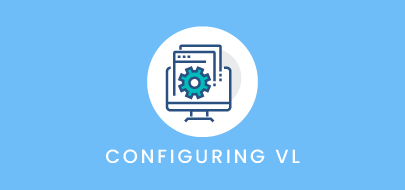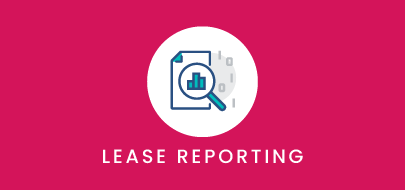Course Description
This course is designed to walk you through the Exports feature of Visual Lease’s Integrations Hub. By the end of this course, learners will be able to setup the SFTP server for your scheduled exports, schedule new exports, review failed/successful exports, and delete exports.
Course Materials
Intro to Course
Hi everyone! Welcome to this video on the new Exports feature of the Integrations Hub.
First, let’s review the webinar agenda:
• I’ll introduce the Integrations Hub
• I’ll provide an example use of Exports
• I’ll demonstrate the Exports feature of the Hub.
Currently, we offer tools such as the auto importer for importing flat files and the Accounting Feeds as ways to integrate, to some degree, the VL platform with your ERP, contract management, or property management system.
We have been working on more advanced integrations capabilities to create more seamless connections between VL and your systems.
We are proud to offer the next class of integration tools via the new Integrations Hub, which provides the following managed file transfer options:
• Schedule the automatic exporting of standard and Ad Hoc reports and accounting feeds
• Schedule the automatic importing of lease or platform information via flat files.
The Hub also provides documentation on our API library for building real-time connections to your systems.
This video covers the Exports feature.
Why would you use the Exports feature? Let’s go to the Visual Lease platform to see one way you can benefit.
You might currently run reports from the Standard Lease Reports screen as follows. Let’s say you run the Lease Accounting report, so I’ll select that.
I may want to run separate reports for separate business units, regions, asset classes, or other criteria. So I load a saved filter for the first set of criteria with the Load Saved Filter button. The criteria for the filter is shown.
After I run the report and either download it or email it, I’ll need to run it again for a different filter as I just did. And that’s just if I’m only running the Lease Accounting Report.
So the setup process is very manual. Plus, each report is emailed or downloaded one at a time.
The Exports section of the Integrations Hub enables you to schedule each report or accounting feed type for each filter all up front. When these reports are generated, they will automatically appear in your sFTP server site.
Let’s jump into the Visual Lease Integrations Hub to see this enhancement. Please note that this is a site used for demonstration, so the information within it may not reflect actual situations. At this time only Administrators will have access.
The first screen that appears is the Dashboard. In the future this will be able to display multiple windows providing metrics on your integrations between Visual Lease and your systems. For now we have the Monitoring window that displays the total number of imports and/or exports attempted in a given period of time, both as a donut chart and a bar chart listing the numbers and percentages of successful and failed attempts.
Before you can export a report or feed, you need to set up an sFTP designation. This is done in Settings. To get there, select your name in the upper right corner and select Settings.
The initial screen is your user profile. From this screen, you can change your password.
Click Export on the left.
Here we see some designations already created. They identify the sFTP server to which the reports and/or accounting exports will be saved and the login credentials for that server. While this feature is in beta testing, you can only use VL’s sFTP server. When this is available for general release, you can use your own sFTP server. You may want to set up multiple sites for different departments such as accounting and lease administration.
To add a new designation, click Add.
Enter an easily-identifiable name in SFTP Name, such as the name of the report or feed you are saving with the connection, or a description of the external system you are sending the report to, such as Accounts Receivable System 1 or Office Space Utilization Server. You can also set up a designation for each type of report. Therefore I’ll name this designation after the ad hoc report I want to export
Enter the Host URL provided by Visual Lease, and the Username and Password.
Enter the sFTP Port number. It is typically 22, which is the case for our server.
Click Connect to save the designation.
Now let’s see the export jobs that have been run or are scheduled to run. Click the X in the upper right to escape the Settings screen.
Click Exports in the left pane.
The top section shows the export jobs that are scheduled
The bottom section shows the jobs that have already run and include whether they succeeded or failed.
Either section can be sorted by any column.
Of course we can also schedule new exports by clicking Schedule.
Enter an identifiable Job Name.
When you click inside the Report field, you see a drop-down of the saved standard and Ad Hoc reports in your platform. These are sorted in a different order than in the platform, so you may need to type part of the report name to see the full name in this list. I’ll select a report.
One thing that must be mentioned is that in order to schedule a standard report in this way, you must first save the criteria and lease filter with the report in the VL platform using the Save Report button. I’ll quickly go back to the Standard Lease Reports screen.
To save a report to appear in the Report list in the Hub, set your criteria, load a filter, and click Save Report. Please note that you will not be able to find these saved reports in the VL platform like you can the Ad Hoc reports.
Let’s go back to the Integrations Hub
So the reports in the Report dropdown are run by this process against the filter and criteria that it was originally saved with.
Enter the first date the export should run. You can also enter the Start Time.
You have the option to either stop the schedule on a particular date by entering that date, or select the No end date check box to keep the export running. To add a specific end date, click the calendar icon again, and select the date this export should stop running.
Select the frequency at which to run the report. I’ll pick Monthly.
Below that is for specifying the SFTP recipient, meaning in which folder in your sFTP partition should the report be saved. I’ll select YYY.
When I click Save, the next occurrence of that schedule is added to the Scheduled list.
In the History section, a Fail result could be because the sFTP designation was incorrect or perhaps there was an error with generating the report. If you see a Fail result, double-check the designation in Settings and run the schedule again. If it still fails, contact support@oscar2.creativamotions.com.
For standard reports, the Output column shows the generic name of the report. For ad hoc reports, the column shows the text Adhoc_Report. In both cases, the date and time are included in the Output name.
To delete a schedule, click the trash can icon next to it. It will stop all future exports of that schedule.
That concludes our introduction to Exports in the Integration Hub!
To recap:
• The Exports feature of the Integrations Hub starts with creating sFTP designations.
• Create scheduled jobs to export specific reports or feeds for specific criteria. You can select the frequency and for how long the jobs should run.
• Use the Exports screen to review the successful and failed export jobs
Thank you for attending this course! If you have any questions, suggestions or feedback on this training video, please email us at Support@visuallease.com.
Course Features
- Lecture 0
- Quiz 0
- Duration 10 weeks
- Skill level All levels
- Students 0
- Assessments Yes







